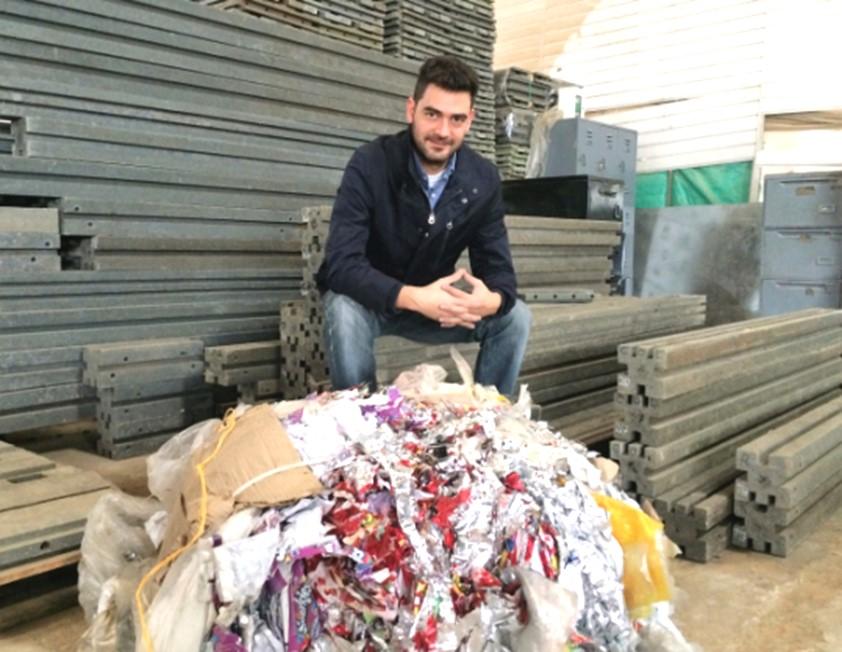
13 minute read
A Time for Plastic Measures: One Mans Plastic is Another Mans House
In recent decades, we've seen an unprecedented increase in plastic products in daily life, ranging from items like hairbrushes to the chairs we sit on. The critical issue at hand is that many governments around the world have not yet created recycling initiatives that have the capacity to handle all of the plastic being disposed of. In situations like this, we can't wait until it's too late for our governments to take action. It's important for people to work together to tackle the problem of plastic and other materials to ensure that future generations have a clean planet to live on. One such person is Óscar Andrés Méndez --an architect and social entrepreneur whose work in Colombia helped make a change for the better. For some context, a 50-year l o n g c o n f l i c t d i s r u p t e d p e a c e f u l progress in Colombia between 1964 and 2016 (TRT World). "Seven million [people] were forced to leave their homes as victims of [said] civil war," and as a result, "about one-third of Colombian families have no home or l i v e i n p o o r l y b u i l t t e m p o r a r y shelters" (TRT World). In addition to the displacement of many people, the war h a s i n c r e a s e d p o v e r t y l e v e l s , d i s p r o p o r t i o n a t e l y a f f e c t i n g communities of African and indigenous d e s c e n t ( T R T W o r l d ) . I n s u c h communities, plastic products are frequently used as they are an in e x p e n s iv e a lt e r n a t i ve t o o t h e r materials. Unfortunately, the waste centers are often overwhelmed with the amount that is thrown away. In the city of Bogotá where Méndez is from, residents were sending 600 tons of

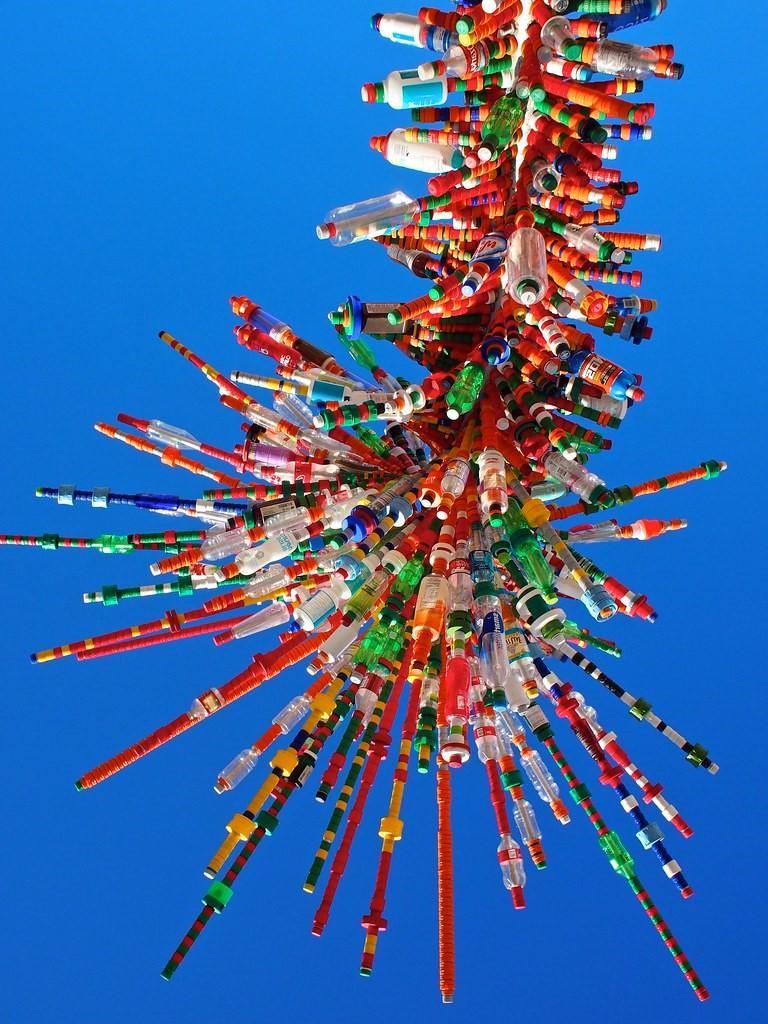
Méndez
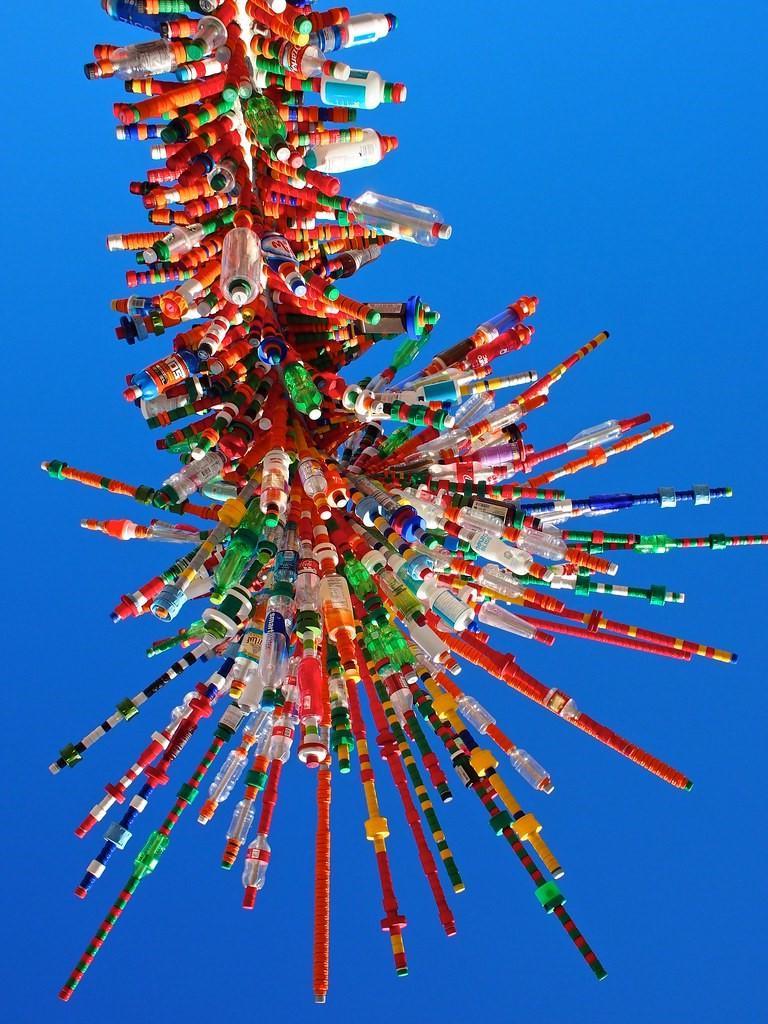



plastic to landfills on a daily basis (Great Big Story). Méndez decided to create a startup called Conceptos Plásticos, which CEO Isabel Cristina Gámez describes as a fusion of two passions "one...for the environment, and the other is for creating products that can benefit vulnerable communities" (Great Big Story). Just three years ago, the company was "nominated to represent Colombia in the 'Chivos Venture' competition, which awards funds of up to $1 million for social entrepreneurs impacting positively on society through their business ventures" and consequently received $300,000 for future projects (Foggin). Méndez understood that addressing poverty in poor communities would be a complicated, yet achievable process. This is why he said, "If we recycle just two percent of all the world's discarded plastic, we could easily solve the housing shortage across Latin America in just ten years with this scheme" (TRT World). His can-do attitude was needed in Bogotá as many people had lost hope in their local officials to do something about their dire situation. The company collaborates with l o c a l r e c y c l i n g a s s o c i a t i o n s a n d sanitation workers to receive most of the plastic that would otherwise go to landfills. 40,000 trucks are responsible for picking up said plastic; the drivers bring the waste to a bodega where it is weighed and they get paid accordingly (Al Jazeera). Then, it's sent to their factory to be individually sorted. In the process of extrusion, synthetic additives are mixed with the plastic and are "heated consistently at their melting point between 200 and 240°F" to prevent burning and the release of toxic gases (Al Jazeera). After the compounds are heated, they are "compressed into brick-shaped molds" and get shipped out within a few days (Al Jazeera). Although the molds are used in different projects, they are primarily used to create homes for displaced people. Having a home allows people to feel more secure, protects them from the elements, and lets them have privacy. Addressing homelessness is pivotal in lowering overall poverty rates in Colombia. With a house made of "home -worthy" building materials to improve their quality of life, residents have one



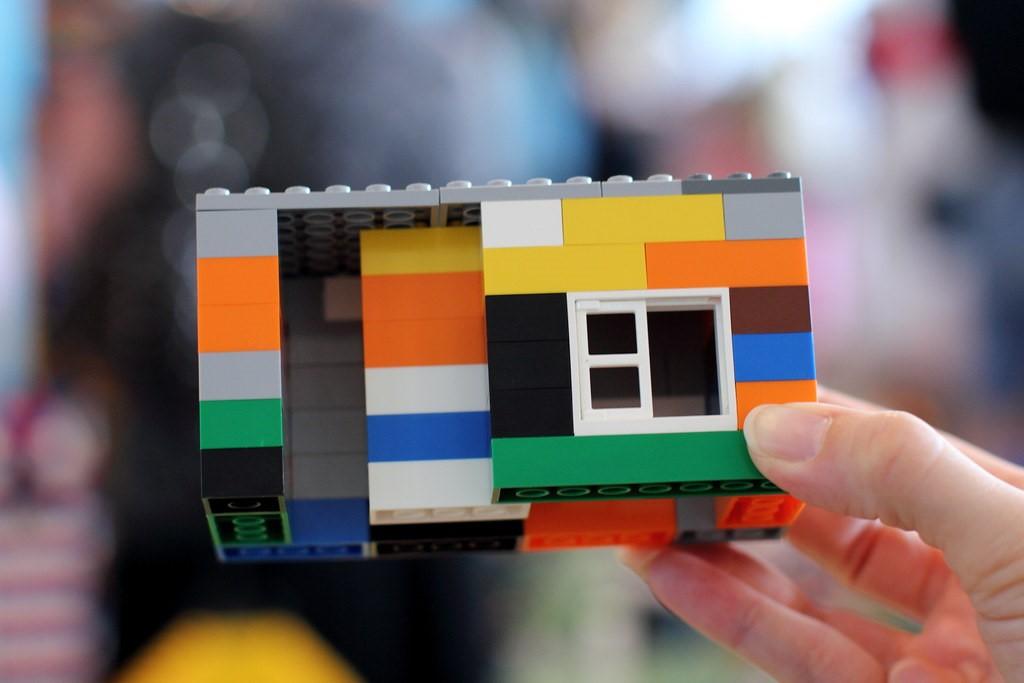
less concern and can start their journey to find employment (Great Big Story). On that note, there are remarkable advantages of using these reinforced bricks in housing. For one, plastic doesn't easily break down over time--it keeps its physical characteristics and is durable for more than 500-600 years (Great Big Story). The "lego-like" bricks are lightweight and “are able to resist all weather conditions and even tremors s u c h a s [ t h o s e ] o f a n earthquake" (Foggin). In addition, there are many economic benefits gained from these compounds. "One house costs $10,000 to make," and "plastic houses have better insulation compared to regular homes, so residents end up paying less for energy" (TRT World). Each house is usually 43 square feet around and is suitable for families of four (Great Big Story). The house construction process also allows anyone to participate regardless of their knowledge or resources (Foggin). This is p i v o t a l b e c a u s e e m p o w e r i n g c o m m u n i t i e s r e q u i r e s i n c r e a s e d engagement in related affairs, allowing them to have representation. As of 2017, Conceptos Plásticos has "[created] economic value from plastics that [otherwise] had no market" (New China TV). They have transformed over 500 tons of waste and created 42 homes out of their efforts (TRT World). This story is a prime example of making use of seemingly useless materials to help build a community. In light of the upcoming holiday season, I think it's important that we help and support people in any way we can by taking inspiration from Méndez’s positive attitude.

Works Cited

Al Jazeera English. (2017, May 31). Colombia’s Lego Homes- earthrise (lead). [Video file]. Retrieved from https://m.youtube.com/watch?v=cfWBhNhZuzY
Foggin, S. Conceptos Plasticos: the Colombian startup building homes out of recycled plastic. LATAM Tech. https://latam.tech/conceptos-Plásticos -the-colombian-startup-building-homes-out-ofrecycled-plastic/3329/
Great Big Story. (2018, Oct. 22). How Recycled Plastic Bottles are Building Homes. [Video file]. Retrieved from https://m.youtube.com/watch? v=5BMOL4VwlII&t=58s
New China TV. (2016, Jun 11). Colombia builds houses with blocks made of discarded plastics. [Video file]. Retrieved from https://m.youtube.com/ watch?v=uSOh21ooM_E TRT World. (2017, Oct. 19). Colombia Plastic Homes: Lego-like bricks help Colombian housing crisis. [Video file]. Retrieved from https://m.youtube.com/ watch?v=Zfr0XHYKBvU


Ar t, Imagination, and the Green New Deal
By Emily Cheng
Since the Green New Deal entered the public conscience, it has reframed the discussion on policy options around the climate crisis, though not without controversy. It is criticized by conservatives for being socialist and radical, and it is criticized by liberals for being aspirational. Within their criticisms, a common word is often brought up: utopian.
A press release from the Congressional Western Caucus strongly proclaimed, “Western Caucus Denounces the Utopian Green New Deal.” House Speaker Nancy Pelosi, too, had dismissive words for the policy in February of 2019: “The green dream or whatever they call it.”
What exactly makes up the Green New Deal that prompts this kind of response? There are three core components of the Green New Deal: rapid decarbonization by 2030, guaranteed jobs, and a just transition for workers and frontline communities. While the resolution is most commonly associated with its sponsors, Representative Alexandria Ocasio-Cortez (NY-14) and Senator Ed Markey (MA), it also has 95 House cosponsors and 14 Senate co-sponsors, an indication of the policy’s legitimacy and viability. The Green New Deal targets all aspects of the economy, including infrastructure, buildings, transportation, agriculture, the food system, among others.
The dictionary definition of a utopia is “an imagined place or state of things in which everything is perfect.” To me, this definition is overly simplistic, and limits utopias to an imaginary concept instead of a better future. In her book, “Imagined Utopias in the Built Environment”, author Anna Novakov offers a different definition of utopia with more nuance: “Utopia is defined not so much as a specific physical place, but an ongoing state-of-mind. Utopia is an emotional experience encompassing the desire for a world (in the future); an anxious need to understand the current moment (in the present); and the disappointing inability to complete the original intention (in the past)…utopia is considered an intentional desire.”
At this point, we must acknowledge that the Green New Deal concept is not new. FDR’s New Deal was a sweeping program to bring “Relief, Recovery, and Reform” to the country during the Great Depression. The initiatives transformed the economy and the role of the government, expanded social programs, and created jobs for millions of Americans. The New Deal was not perfect—racial justice was swept under the rug—but it is this radical rethinking of current systems that we need. We needed it then for the Great Depression, and we need it now for the climate crisis.
So, when Representative Morgan Griffith (VA-09) of the Congressional Western Caucus denounced the Green New Deal, calling it “a radical reshaping of American society in the name of utopian environmental policy”…well that is kind of the point.
There is also a practical reason to embrace the utopian nature of the Green New Deal. By connecting climate policy with other policy issues— like healthcare, dignified jobs, transportation, infrastructure, and racial justice—it gives climate change an elevated platform that will reach far more people.

So, how do we get there? Examples of Art Created to Promote the Green New Deal The actual Green New Deal resolution is noticeably vague and short. It lists the aspects of society that will be changed, but it is hard to envision what exactly a complete change will look like. Art, literature, and other forms of media can help us to reimagine these systems and picture a realized utopia.
The genre climate change fiction, or cli-fi, emerged to contextualize climate change and “bring disaster forcefully to life” (Waldman). For example, in Oryx and Crake, Margaret Atwood points to technology and increased corporate powers as facilitators of the downfall of humanity. Atwood writes about the minute changes in society that lead to the breaking point. “Alternative universes are really devices for embarrassing the present, as imaginary cultures are used to estrange and unsettle our own” (Eagleton). Often, it is more common to find examples of dystopias rather than utopias (e.g. 1984, Brave New World, Fahrenheit 451, The Hunger Games). While dystopian cli-fi can bring urgency and give us increased clarity around the climate crisis, we also need literature to visualize potential futures in which we do survive the climate crisis. We need art that reimagines society, not just art that serves as a warning of the impending climate doom. With foresight of a more utopian future, we know what kind of world we are working towards. It is more difficult to push for the world we want if we cannot see it.
The Federal Art Project, a New Deal program under the Works Progress Administration, saw the power of art as a way to develop American culture and to provide relief during the Great Depression. It created tens of thousands of jobs for artists, including musicians, actors, dancers, writers, photographers, painters, and sculptors. Some notable programs included painting murals for government buildings and showcasing examples of American design around the country to build a national index. In our modern day, we should view art not just as a coping mechanism or an understanding for climate change, but as a driver of action. If we want to radically change our society, we need powerful reimaginings to bring us there. A reference point of art and stories can mobilize people more than policies, more than graphs, more than degrees Celsius.
The video “A Message from the Future” does exactly this. It gives (literal) color to the Green New Deal and how it will shape our lives. Presented by Naomi Klein, written by
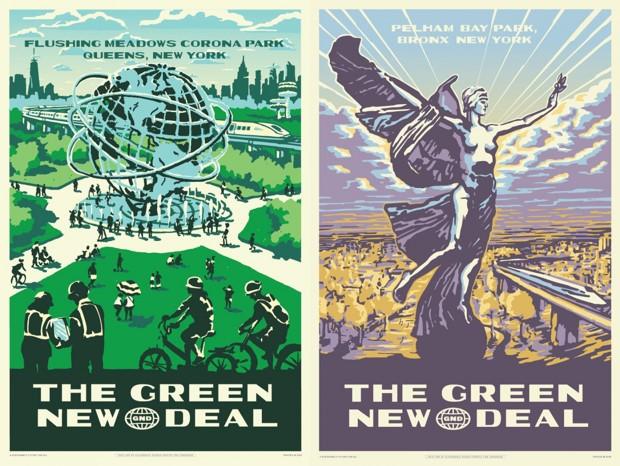
Alexandria Ocasio-Cortez and Avi Lewis, and illustrated by Molly Crabapple, it opens with AOC on the bullet train from New York to DC, a small detail of the transportation overhaul it aims to deliver. The video first presents the climate science and the necessity that drive this policy. It then dives into the story of the ten years since the Green New Deal was passed, and the changes it ushered in. A fictional character, Ilyana, participated in Americorps Climate, restoring wetlands and working as a solar plant engineer. Ilyana then becomes a teacher—a form of low-carbon care-work supported through the Universal Childcare Initiative. The video balances hope with the realities of climate change. “We knew from our history how to pull together to overcome impossible odds,” AOC narrates. Despite these efforts, in the video, Miami eventually goes underwater due to sea level rise. Even so, “as we battled the floods, fires and droughts, we knew how lucky we were to have started acting when we did.”
In researching examples of this sort of hopeful storytelling, I also came across Everything Change, a collection of ten stories from the ASU Imagination and Climate Futures Initiative, and the Infographic Energy Transition coloring book, which visualizes what an energy transition would look like in an unconventional medium. These are just two examples of the emerging body of initiatives combining climate change and the humanities.
“To portray the future in the language of the present may well be to betray it. A truly radical change would defeat the categories we currently have to hand. If we can speak of the future at all, it follows that we are still tied to some extent to the present” (Eagelton). Climate change is an opportunity to drastically rewrite our future and realize a more just world. To solve something as large and encompassing as climate change, we need new policy tools and new language.
Works Cited “America's Great Depression and Roosevelt's New Deal”. Digital Public Library of America. https://dp.la/exhibitions/ new-deal/relief-programs “Everything Change, Volume II”. Arizona State University. https://climateimagination.asu.edu/everything-change-vol2/ “The Infographic Energy Transition Coloring Book”. European Design Awards. https://europeandesign.org/ submissions/the-infographic-energy-transition-coloring-book/ Eagelton, Terry. “Utopias, past and present: why Thomas More remains astonishingly radical”. The Guardian. 16 Oct 2015. https://www.theguardian.com/books/2015/oct/16/utopias-past-present-thomas-more-terry-eagleton Hurley, Amanda Kolson. “What’s the Deal With AOC’s Retro-Style GND Posters?” CityLab. 30 Aug 2019. https:// www.citylab.com/design/2019/08/aoc-green-new-deal-posters-design-wpa-federal-art-project/597196/ Klein, Naomi. “A message from the future with Alexandria Ocasio-Cortez”. The Intercept. 17 April 2019. https:// theintercept.com/2019/04/17/green-new-deal-short-film-alexandria-ocasio-cortez/ Levitz, Eric. “AOC’s Green New Deal Resolution Is Utopian — and Pragmatic”. New York Magazine. 7 Feb 2019. http:// nymag.com/intelligencer/2019/02/ocasio-cortez-aoc-green-new-deal-resolution-explained-utopian-andpragmatic.html Novakov, Anna. Imagined Utopias in the Built Environment. Cambridge Scholars Publishing. Newcastle Upon Tyne, 2017, pp.1-2. Waldman, Katy. “How climate-change fiction, or “cli-fi” forces us to confront the incipient death of the planet” The New Yorker. 9 Nov 2018. https://www.newyorker.com/books/page-turner/how-climate-change-fiction-or-clifi-forces-us-to-confront-the-incipient-death-of-the-planet










